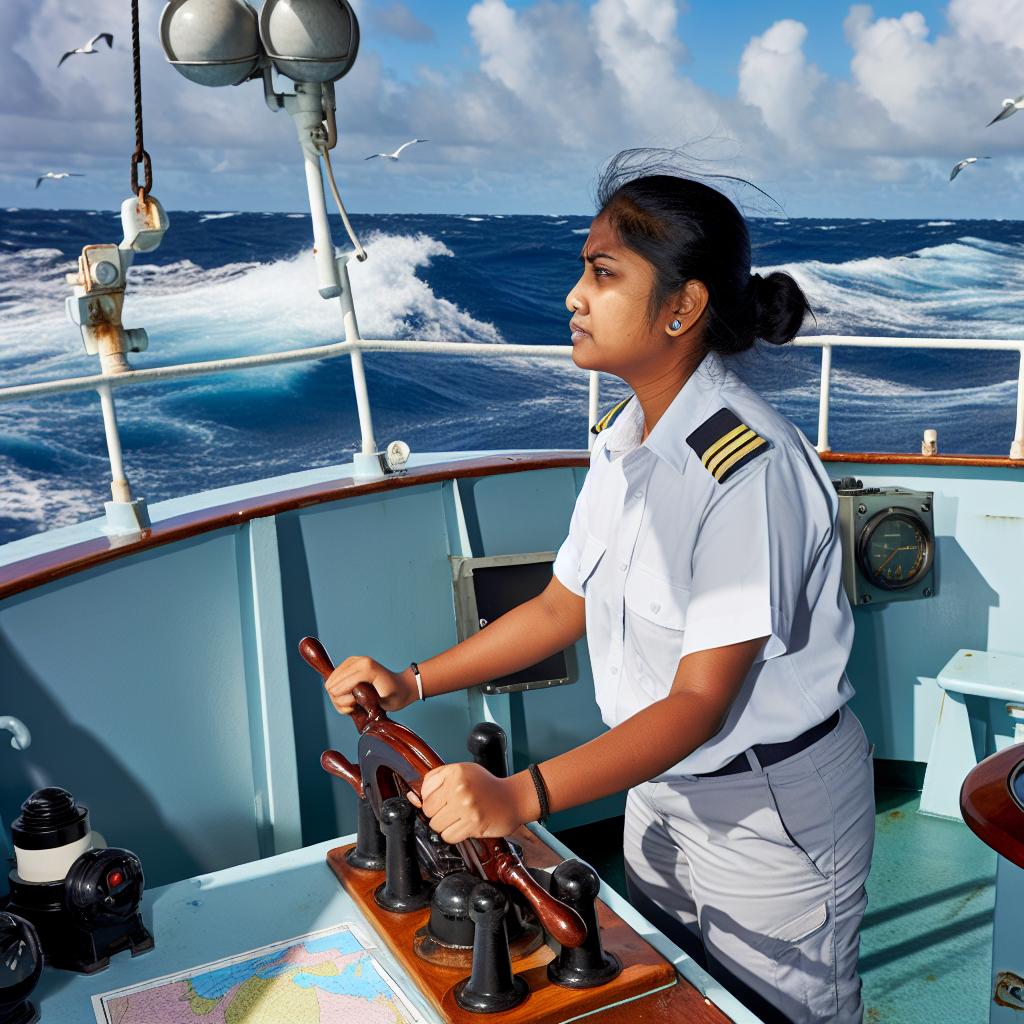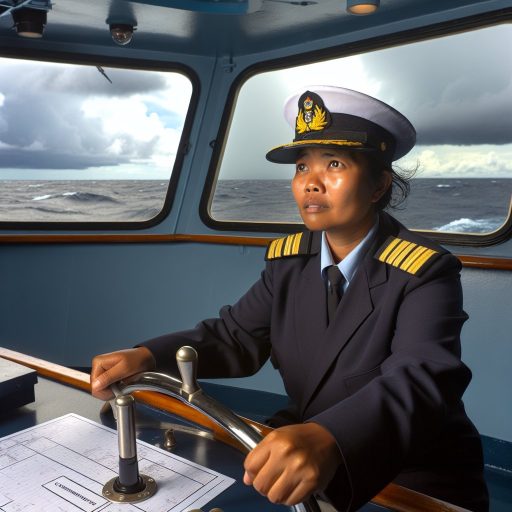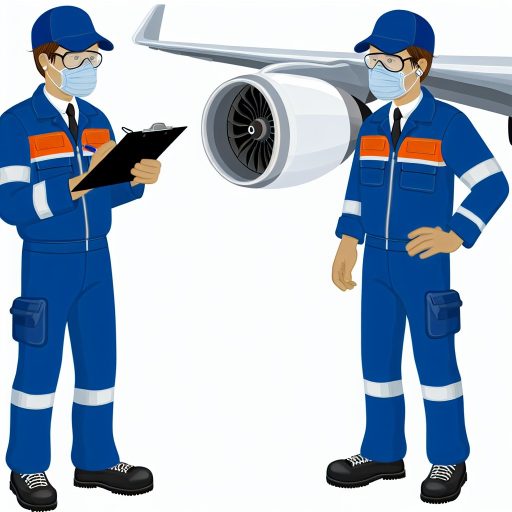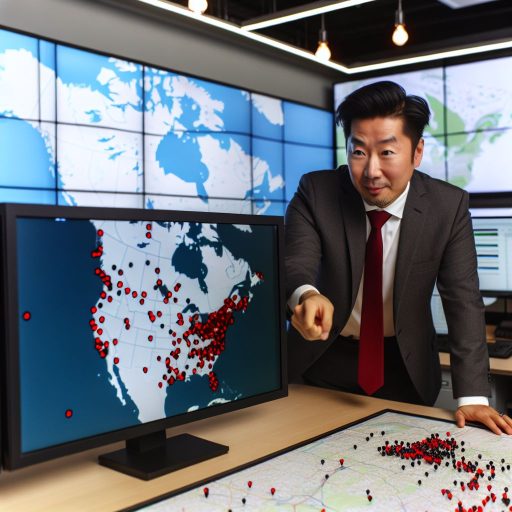Definition and Role of a Maritime Pilot
What is a Maritime Pilot?
A maritime pilot is a specialized navigator for ships.
They possess extensive knowledge about local waters.
Pilots help ensure safe navigation in restricted areas.
They board vessels when entering or leaving ports.
Additionally, pilots guide ships through challenging waterways.
Responsibilities of a Maritime Pilot
Maritime pilots assess the vessel’s condition before navigation.
They communicate with the ship’s crew to coordinate movements.
Moreover, pilots provide real-time information on weather conditions.
They utilize advanced navigation tools during the process.
Safety is always their top priority when guiding vessels.
Collaboration with Other Professionals
Maritime pilots work closely with harbor masters and dockmasters.
They coordinate with other maritime agencies for safety measures.
Additionally, pilots inform tugboat operators of their plans.
This teamwork is essential for efficient port operations.
Training and Certification
Becoming a maritime pilot requires extensive training.
Prospects must gain experience on various vessels.
They must pass rigorous examinations to attain certification.
Continuous training is necessary to keep skills updated.
Ultimately, safety and efficiency are the goals of this training.
Qualifications and Training Required for Maritime Pilots
Educational Background
Maritime pilots typically hold a high school diploma or equivalent.
However, many employers prefer candidates with a bachelor’s degree in maritime studies.
Related fields such as marine engineering or navigation also provide valuable skills.
Licensure Requirements
All maritime pilots must obtain a valid pilot license.
This license requires successful completion of written and practical exams.
Each state or region has specific licensing standards and procedures.
Unlock Your Career Potential
Visualize a clear path to success with our tailored Career Consulting service. Personalized insights in just 1-3 days.
Get StartedOn-the-Job Training
After obtaining a license, pilots undergo extensive on-the-job training.
This training lasts several months to a few years, depending on the location.
Pilots learn the nuances of local waterways and navigation hazards.
Continuous Professional Development
Maritime pilots must engage in continuous professional development.
They attend workshops and training sessions to stay updated on industry standards.
Moreover, pilots must monitor changes in regulations and technological advances.
Physical and Health Requirements
Being a maritime pilot demands physical fitness and good health.
Pilots often face challenging weather and uncomfortable working conditions.
As a result, many employers require routine health evaluations.
Soft Skills and Personal Qualities
Effective communication skills are essential for maritime pilots.
Pilots must clearly convey information to crew members and other vessels.
Strong problem-solving skills also help them manage unexpected situations.
Additionally, they should have excellent decision-making abilities.
Key Responsibilities in Navigational Safety
Expert Vessel Navigation
Maritime pilots possess expert navigation skills vital for safe sea travel.
They expertly guide vessels through narrow or congested waters.
In addition, they assess local navigational hazards effectively.
Communication with Crew
Effective communication is essential between pilots and vessel crew members.
Pilots provide clear instructions to ensure the smooth execution of maneuvers.
Moreover, they maintain open channels for emergency situations.
Environmental Awareness
Maritime pilots remain vigilant about environmental factors influencing navigation.
They continuously monitor weather conditions to adjust navigation plans.
Further, they adhere to regulations protecting marine ecosystems.
Collaboration with Other Navigational Authorities
Collaboration with port authorities enhances navigational safety.
Pilots coordinate with harbor masters to ensure vessel traffic management.
They also communicate with other maritime stakeholders for shared information.
Continual Professional Development
Pilots engage in continual professional development programs.
This effort helps them stay current with navigational technologies and practices.
Additionally, they participate in training exercises to hone their skills.
Uncover the Details: Tools Every Aviation Maintenance Technician Needs
Collaboration with Crew and Port Authorities
Building Strong Communication Channels
Effective communication is crucial for maritime pilots.
Pilots must relay important navigational information clearly.
This clarity helps prevent misunderstandings during critical operations.
Coordinating with Ship’s Crew
Maritime pilots collaborate closely with a vessel’s crew.
They provide essential guidance for safe docking and undocking procedures.
Additionally, pilots assess the ship’s readiness to navigate port waters.
Through regular updates, they maintain situational awareness for all parties.
Engaging with Port Authorities
Collaboration with port authorities is vital for maritime pilots.
Pilots participate in pre-arrival meetings to review docking procedures.
These discussions cover current weather conditions and tide schedules.
They also help coordinate the movements of other vessels in the harbor.
Handling Emergencies Together
Preparedness for emergencies is a shared responsibility.
Pilots work with the crew and port authorities to develop response plans.
Regular drills enhance the effectiveness of these emergency protocols.
Strict adherence to safety measures ensures a swift, coordinated response.
Fostering Trust and Reliability
Building trust among all stakeholders improves operational efficiency.
Consistent communication fosters a culture of reliability.
Informed crew members can respond effectively to pilot commands.
Ultimately, this teamwork enhances maritime safety and navigation.
Delve into the Subject: Freight Forwarder Career Pathways And Opportunities
Understanding Maritime Regulations and Compliance
Importance of Maritime Regulations
Maritime regulations ensure safety at sea.
They protect the environment and marine life.
Compliance helps prevent accidents and mishaps.
Understanding these regulations is essential for maritime pilots.
Key Regulatory Bodies
Various organizations oversee maritime regulations.
The International Maritime Organization (IMO) sets global standards.
National agencies enforce these regulations locally.
The U.S. Coast Guard plays a vital role in the United States.
Types of Regulations
Maritime regulations cover several areas.
There are safety regulations for ships and crews.
Environmental regulations protect marine ecosystems.
Operational regulations govern navigation and vessel conduct.
Compliance Checklist for Maritime Pilots
Maritime pilots should follow key compliance steps.
- Regularly review applicable regulations.
- Attend training sessions for updates.
- Document all navigational procedures properly.
- Ensure vessels meet safety standards.
Consequences of Non-Compliance
Non-compliance can lead to severe penalties.
It may result in fines for the operating company.
Additionally, pilots may face suspension or loss of license.
Moreover, accidents can harm the environment and human life.
Staying Informed
Maritime pilots must stay updated on regulations.
Engaging with professional organizations can help.
Attending maritime law seminars is beneficial.
Networking with fellow pilots fosters knowledge exchange.
Explore Further: How to Improve Driver Safety as a Fleet Manager

Crisis Management and Emergency Response Procedures
Understanding the Role of Maritime Pilots
Maritime pilots play a vital role in crisis management.
They navigate vessels through challenging waters.
Additionally, they ensure safe docking procedures during emergencies.
Each pilot understands their responsibilities clearly.
Emergency Preparedness Planning
Effective crisis management starts with thorough planning.
Pilots assess potential risks in navigational areas.
They develop emergency response plans tailored to each situation.
Regular drills enhance preparedness among crew and pilots.
Developing Communication Channels
Clear communication is crucial during emergencies.
Pilots coordinate with ship crews and port authorities.
They use established protocols to relay critical information.
Maintaining communication ensures smooth operations even in crises.
Responding to Emergencies
When a crisis occurs, pilots act promptly and decisively.
They evaluate the situation and make immediate decisions.
Pilots may redirect vessels to safer waters when necessary.
Quick responses reduce risks and protect lives.
Post-Crisis Evaluation and Learning
After a crisis, pilots conduct thorough evaluations.
They analyze response effectiveness and gather feedback.
This analysis leads to improvements in future plans.
Continuous learning enhances safety and crisis management skills.
Discover More: Managing Large Vehicle Fleets Efficiently in Canada
Technological Tools Used by Maritime Pilots
Navigational Instruments
Maritime pilots use advanced navigational instruments for precise maneuvering.
GPS systems provide accurate location data during navigation.
Radar systems help detect nearby vessels and obstacles.
Chartplotters display real-time navigational information.
Electronic charts enhance situational awareness on the water.
Communication Devices
Effective communication is vital for maritime pilots.
VHF radios facilitate communication with vessels and port authorities.
Satellite phones provide communication in remote areas.
Intercom systems ensure clear communication on the bridge.
Weather Monitoring Tools
Understanding weather conditions is crucial for safe navigation.
Pilots utilize weather radars to track storms and precipitation.
Satellite imagery offers real-time weather updates.
Automatic Identification Systems (AIS) help monitor traffic patterns.
Automation and Control Systems
Automation plays a key role in modern maritime operations.
Dynamic Positioning Systems allow vessels to maintain their position automatically.
Engine control systems enhance vessel maneuverability.
Autopilot systems assist in maintaining course during long passages.
Training and Simulation Software
Training is essential for developing pilot skills and knowledge.
Simulation software provides realistic training environments for pilots.
Virtual reality tools offer immersive training experiences.
These tools help pilots prepare for various scenarios on the water.
Data Analysis Tools
Data analysis is integral to decision-making for pilots.
Traffic management systems analyze vessel movements and patterns.
Weather forecasting models aid in predicting conditions at sea.
Software tools evaluate navigational routes and risks.
Challenges Faced in Maritime Piloting Today
Increased Vessel Size
Maritime pilots navigate increasingly larger vessels.
These massive ships challenge existing port infrastructure.
Ports often require upgrades to accommodate these vessels.
Furthermore, increased size complicates maneuvers in narrow channels.
Technological Advancements
New technologies enhance navigation but create challenges.
Pilots must adapt quickly to advanced navigation systems.
Automation in ships sometimes leads to over-reliance on technology.
Training is essential to keep pilots proficient in traditional methods.
Environmental Regulations
Pilots must comply with strict environmental regulations.
These regulations affect routing and speed in maritime navigation.
Additionally, they require constant awareness of changing laws.
Failure to comply can result in severe penalties for pilots and firms.
Weather Conditions
Adverse weather significantly impacts maritime operations.
Pilots face challenges navigating in heavy fog or storms.
Weather forecasting technology must be integrated effectively.
Communication is crucial during unpredictable weather events.
Increased Traffic
Maritime traffic is on the rise worldwide.
This increase leads to congested shipping lanes.
Pilots must coordinate with multiple vessels simultaneously.
Effective communication is critical to prevent collisions.
Safety Concerns
Safety remains the top priority for maritime pilots.
Incidents at sea can have catastrophic consequences.
Pilots undergo regular training to manage emergency situations.
Preparing for emergencies requires ongoing simulation training.




